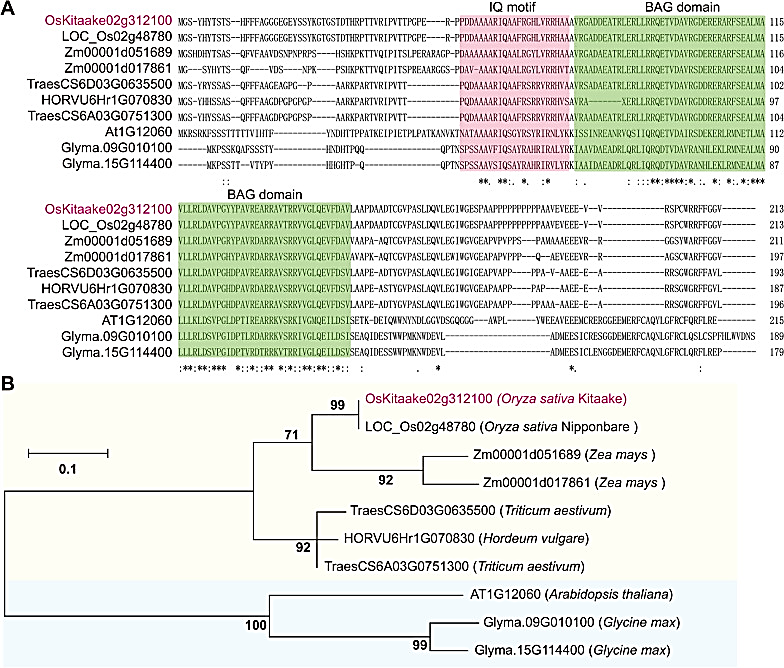|
Jie Wang, Min Ao, Ao Ma, Jinlei Yu, Peng Guo, Shuangzhan Huang, Xiaoyuan Peng, Dae-Jin Yun, Zheng-Yi Xu
Rice (N Y); 2024 Jan 22; 17(1):10. doi: 10.1186/s12284-024-00686-z.
Abstract
B-cell lymphoma 2 (Bcl-2)-associated athanogene (BAG) family genes play prominent roles in regulating plant growth, development, and stress response. Although the molecular mechanism underlying BAG's response to abiotic stress has been studied in Arabidopsis, the function of OsBAG underlying saline-alkaline stress tolerance in rice remains unclear. In this study, OsBAG6, a chaperone regulator localized to mitochondria, was identified as a novel negative regulator of saline-alkaline stress tolerance in rice. The expression level of OsBAG6 was induced by high concentration of salt, high pH, heat and abscisic acid treatments. Overexpression of OsBAG6 in rice resulted in significantly reduced plant heights, grain size, grain weight, as well as higher sensitivity to saline-alkaline stress. By contrast, the osbag6 loss-of-function mutants exhibited decreased sensitivity to saline-alkaline stress. The transcriptomic analysis uncovered differentially expressed genes related to the function of "response to oxidative stress", "defense response", and "secondary metabolite biosynthetic process" in the shoots and roots of OsBAG6-overexpressing transgenic lines. Furthermore, cytoplasmic levels of Ca2+ increase rapidly in plants exposed to saline-alkaline stress. OsBAG6 bound to calcium sensor OsCaM1-1 under normal conditions, which was identified by comparative interactomics, but not in the presence of elevated Ca2+. Released OsCaM1-1 saturated with Ca2+ is then able to regulate downstream stress-responsive genes as part of the response to saline-alkaline stress. OsBAG6 also interacted with energy biosynthesis and metabolic pathway proteins that are involved in plant growth and saline-alkaline stress response mechanisms. This study reveals a novel function for mitochondrial localized OsBAG6 proteins in the saline-alkaline stress response alongside OsCaM1-1.
See https://pubmed.ncbi.nlm.nih.gov/38252225/

Fig. 1 Multiple alignment of amino acid sequence and phylogenetic analysis of BAG6 orthologs in plants. A Multiple alignment of amino acid sequence of OsBAG6 and its orthologs in other species. The IQ motif and BAG domain are shaded in different colors. B The phylogenetic tree was constructed by Maximum Likelihood method using MEGA X software using the amino acid sequences of the proteins. The sequences of the proteins were obtained from Phytozome 13 (https://phytozome-next.jgi.doe.gov/). The tree is drawn to scale, with branch lengths measured in the number of substitutions per site. Monocots or dicotyledons are shaded in yellow or blue colors, respectively.
|
[ Other News ]___________________________________________________
|